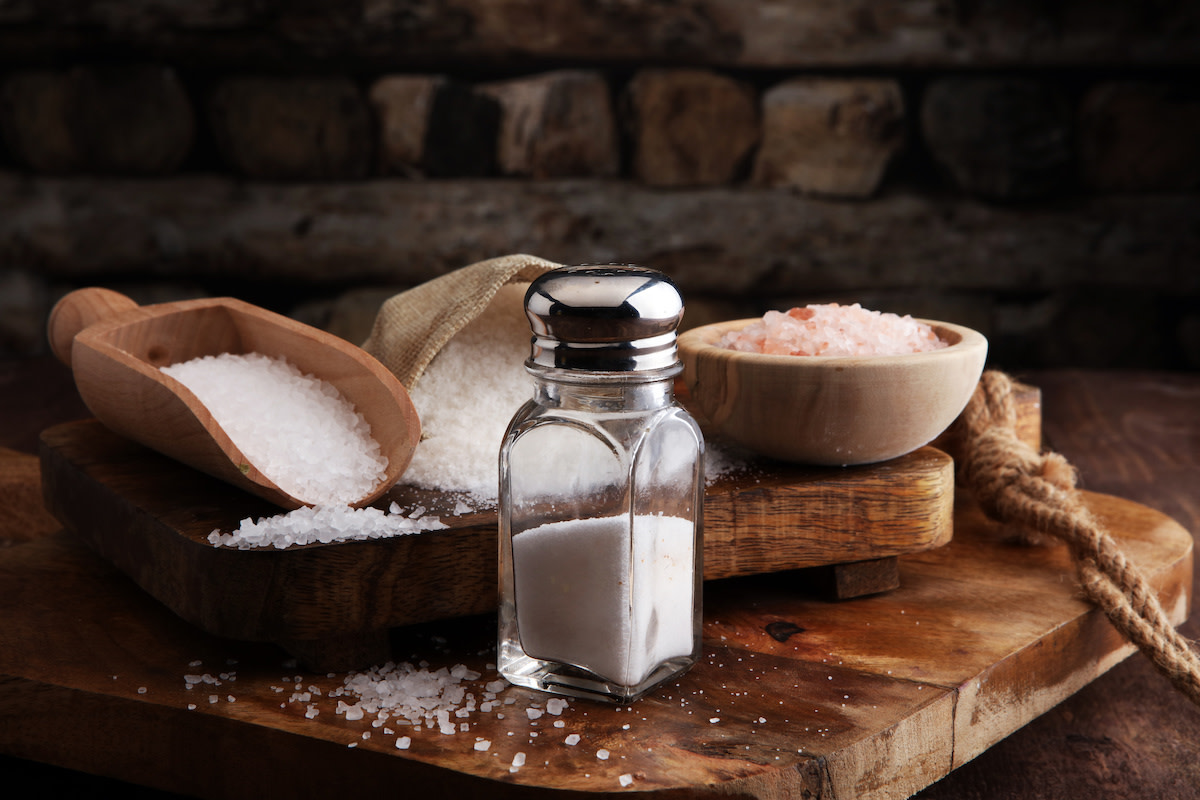Sea Salt vs. Table Salt: What’s the Difference?
Written by MasterClass
Last updated: Aug 31, 2021 • 2 min read
You can use sea salt and table salt for many of the same culinary purposes, but the two differ in texture and trace minerals.
Learn From the Best
What Is Sea Salt?
Sea salt is salt produced through the evaporation of saltwater. It is minimally processed, so it will contain trace amounts of minerals, such as magnesium, iron, zinc, calcium, and potassium. Variations in harvesting and evaporation methods have resulted in many different types of sea salt, including fleur de sel (which is salt harvested from ponds), and Celtic sea salt, Maldon sea salt, and Hawaiian red and black sea salt.
What Is Table Salt?
Regular table salt is salt mined from underground salt deposits and salt mines. Table salt is processed to remove impurities and trace minerals. It also contains additives, such as anti-caking agents to prevent it from clumping. Table salt can also be fortified with iodine to create iodized salt.
Sea Salt vs. Table Salt: What’s the Difference?
Sea salt and table salt are both made up of sodium chloride, a key ingredient in salt. The two types of salts have the same nutritional value, but there are a few key differences:
- Texture: Sea salt comes in a variety of textures, from fine to coarse sea salt, which has larger crystals. Table salt is usually found in a fine powder form. Sea salt crystals have a coarser mouthfeel than table salt. Sea salt works best as a finishing salt for meats, vegetables, chocolats, and sweets, adding a pleasing crunch and complex flavor when sprinkled over or rubbed on food.
- Composition: Sea salt and table salt are both 40 percent sodium by weight and contain the same sodium content.
- Trace minerals: Sea salt contains trace minerals such as magnesium, iron, zinc, calcium, and potassium because it is not processed. The mineral content sometimes gives sea salt a slightly different taste compared to the general saltiness of table salt. Table salt does not contain any trace elements because it has been processed, but it does contain anti-caking agents to prevent clumps.
- Iodine: Table salt is commonly fortified with iodine to create iodized salt. Iodized salt can help prevent iodine deficiency. Sea salt, however, is not iodized.
Can You Substitute Sea Salt for Table Salt?
Regular table salt and sea salt are easy to find in grocery stores. You can use both types of salts interchangeably by weight because they contain the same amount of sodium. When measuring salt by volume, use more sea salt in place of table salt to prevent your meal from being under-seasoned (large sea salt crystals will not settle as densely into a measuring spoon as the fine grains of table salt).
Health Benefits to Salt
Sodium is an essential nutrient and is needed to control blood pressure and fluid intake. Salt intake is an important part of healthy eating. Though sodium is an essential nutrient, too much sodium can lead to high blood pressure and heart disease. According to dietary guidelines from the American Health Association (AHA), the recommended sodium intake for adults is 1,500 milligrams per day.
Want to Learn More About Cooking?
Become a better chef with the MasterClass Annual Membership. Gain access to exclusive video lessons taught by the world’s best, including Gordon Ramsay, Gabriela Cámara, Chef Thomas Keller, Dominique Ansel, Yotam Ottolenghi, Alice Waters, and more.
